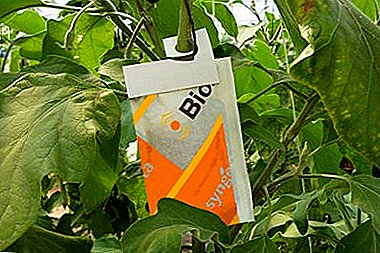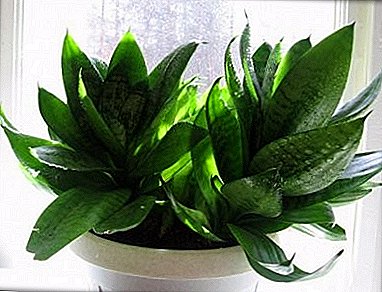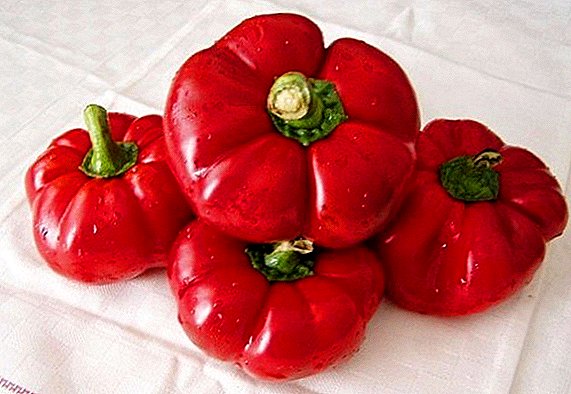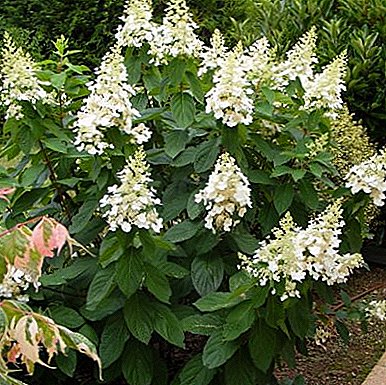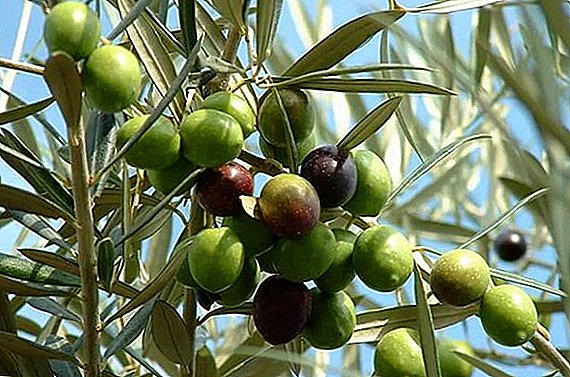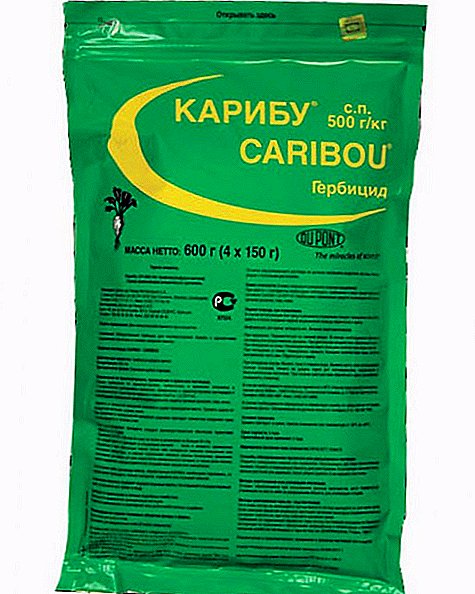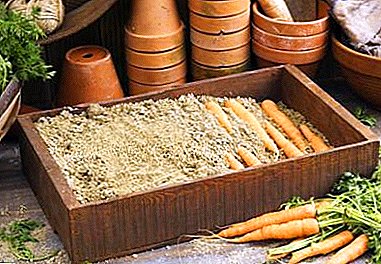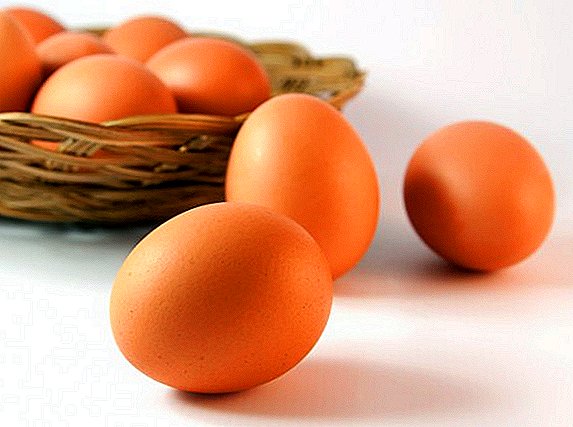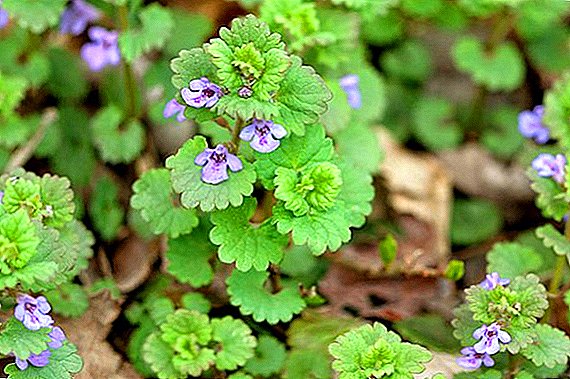 Among summer residents, gardeners and landscape designers, practice is widespread in the use of wild plants in decorating plots. One of these creeping plants is ivy buddooviduidnaya. It grows well in wet and shady places, quickly filling the empty areas.
Among summer residents, gardeners and landscape designers, practice is widespread in the use of wild plants in decorating plots. One of these creeping plants is ivy buddooviduidnaya. It grows well in wet and shady places, quickly filling the empty areas.
Botanical description
Budra ivyhsevidnaya (lat. Glechoma hederacea) is a perennial plant belonging to the family Gubocholaceous. She has thin, creeping, tetrahedral stems, rising 20 cm above the ground and extending to half a meter.
The leaves are small, heart-shaped, with wavy edges, arranged in pairs on the petioles. Flowers are small, light lilac with a bluish tinge. Flowering continues from early May to early September. From mid-July, the fruits ripen: small oblong brown nuts.
Ivy-shaped wild budra is not rare in the Caucasus, in Central and Eastern Europe, in Asia and even in North America, and its ornamental cultivation is also common there.
Did you know? In the dictionary, V. Dalya Budra is mentioned under the name "Fortress" - grass from forty ailments.
Weed or desired culture?
With the unplanned appearance of budra in the garden or in the yard, especially if it came out of place, it is difficult to regard it differently than the invasion of weeds. Due to the active spread of the plant, which can quickly capture the lawn left unattended, and the laboriousness of getting rid of it, it is difficult to believe in the increased love of gardeners for it.However, this grass has a lot of advantages that make growing it extremely useful:
- it is very decorative: it has beautiful leaves with various colors (green, green and white, crimson);
- This is a wonderful soil cover plant, unpretentious and disease resistant, a good option for rockeries;
- its leaves are rich in essential oils, due to which they have a smell close to mint (for this plant is also called "catnip");
- this plant is a beautiful honey plant, and all gardeners know how important it is to attract bees to the site;
- Herb is widely used in folk medicine as a choleretic, antiseptic and expectorant.
Important! When using Boudra for medical purposes, it is important to observe the correct dosage: this plant contains alkaloids, which can lead to cardiac arrhythmias and pulmonary edema.
Landing conditions
 If you choose budra for growing in your garden, you need to adhere to several conditions. She prefers intense diffused light, but grows well in shady places. It is desirable that during the day it is covered by the sun a little longer.
If you choose budra for growing in your garden, you need to adhere to several conditions. She prefers intense diffused light, but grows well in shady places. It is desirable that during the day it is covered by the sun a little longer. This plant does not have any special requirements for the quality of the soil; it survives well on most soils. The grass is thermophilic, so it’s better to start planting when the earth warms up and the temperature outside reaches +10 ° C, but it will grow and develop at a temperature of about +20 ° C.
As a ground cover plant, it can be used to decorate around the trunks of garden trees. It will take root well, filling the voids between conifers and shrubs.
You will probably be interested in reading about such ground-cover perennials as evergreen iberis, stonecrop, periwinkle, primrose, saxifrage, carnation, camelling, and young.

It is also suitable for creating lawns and lawns, it looks organically in a flowerbed, where it can even prevail in early summer until the time of flowering begins.
How to plant ivy-shaped bud
For planting this herb, you can use both seeds and cuttings. Budra, like any wild plant, is unpretentious, so planting in the open field and caring for it will not require you much trouble and effort.
Seeds
Cultivation of budr on the open ground from seeds should be started in spring or autumn, as they are resistant to frost and can spend the winter well.
Seeds are simply sown in the pre-moistened and cultivated soil, and sprinkled on top of a small layer of soil, slightly compacting it. To the plants quickly ascended, watering should be at least twice a week.
Did you know? Fresh leaves budry used to make summer tonic and alcohol infusions.
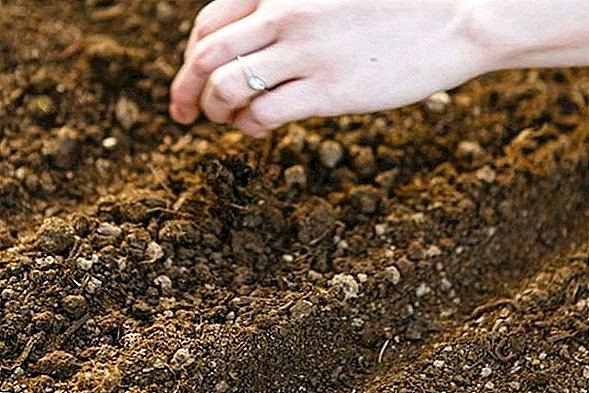
Cuttings
A simpler way is to grow budra from cuttings. They can be planted all summer. To obtain such planting material, the shoots are separated without flowers, not longer than 15 cm, then they are placed in water, peat-sand mixture or wet sand.The roots will grow soon enough, after which the resulting cuttings can be planted in the chosen place. A budra planted in this way does not require any special cultivation and care, it is enough that you do for other plants.
Care rules
As stated above, ivy-shaped budra is quite unpretentious, which means that planting and leaving it will not unduly distract you from other works in the garden. But still when growing you need to know that it is moisture-loving, heat-loving and should be fed during intensive growth.
Watering
As buddha is moisture-loving, it is undesirable that the ground dries out under it, therefore it needs to be watered about twice a week. In hot weather - more often, and it is desirable to moisten the leaves every day. If the plants overwinter at home in pots, they should be watered very moderately. 
Fertilizer
In the period from May to the end of July, when the air warms up to comfortable for Boudra +20 ° C, she begins a period of active growth. At this time, at least once a month, it should be fed with complex mineral or organic fertilizers.
Transfer
It is undesirable to replant the budra since it does not need it. If there is such a need, then it should be done in the spring, cutting off the shoots before transplanting.
Difficulties in growing
The list of hazards for this herb is quite short. Due to improper irrigation regime, the plants may turn yellow and fall off the leaves, which is associated with root rot, caused by excessive moisture in the soil or an excess of direct sunlight.
Important! In case of insufficient watering, a spider mite can settle in dry air conditions in Budra!
 In addition, it can be attacked by a louse or whitefly. In all these cases, drugs will help to combat the corresponding pests.
In addition, it can be attacked by a louse or whitefly. In all these cases, drugs will help to combat the corresponding pests.Well, it turns out that budra is a plant that is undemanding to the growing conditions, which gives the garden a neat appearance and prevents the spread of weeds (such as dandelion or coltsfoot). Is this not the best option for any gardener?


